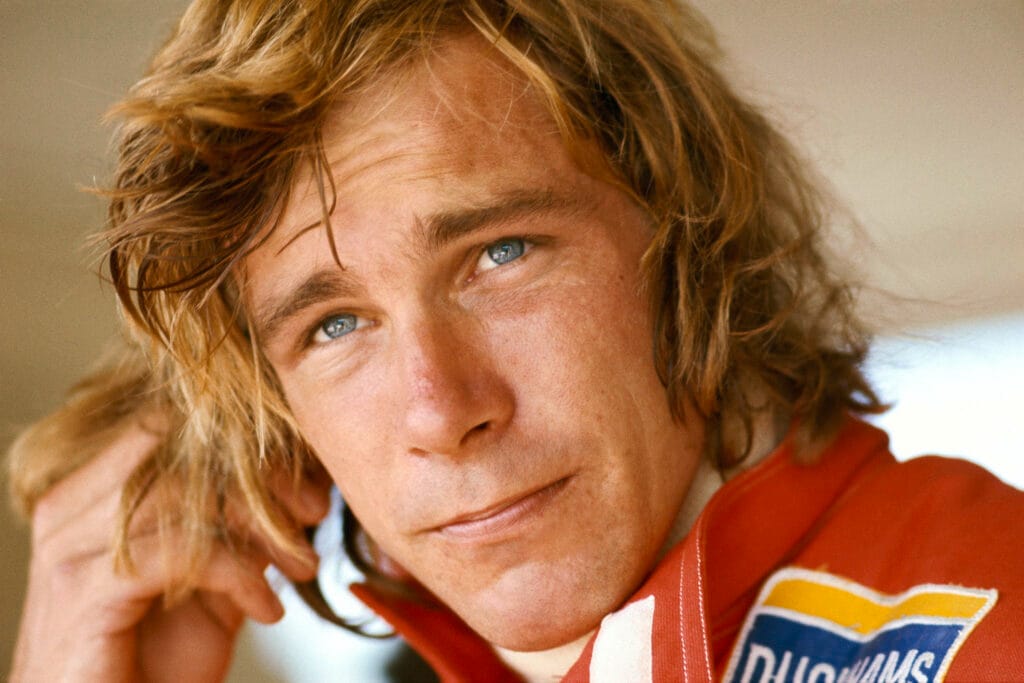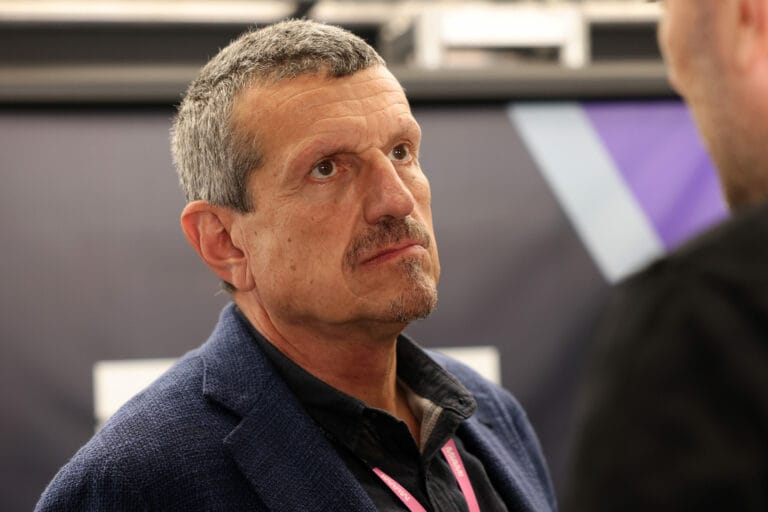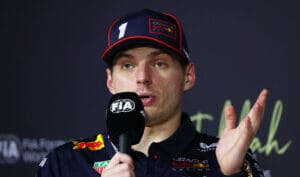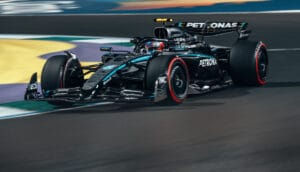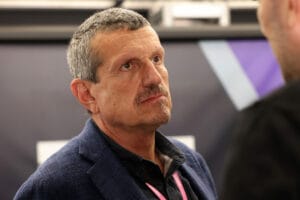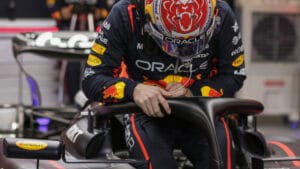Formula 1 drivers today must tread carefully with their words, even at the risk of community service. Just ask Max Verstappen. However, the golden era of auto racing was a different story, with James Hunt leading a generation of mavericks. This is a portrait of the last Playboy-racer in Formula 1.
James Hunt was a handsome figure, spoke impeccable boarding school English, yet was simultaneously an unguided missile. Hunt was fond of indulging in alcohol, drugs, and women, lived in constant fear of accidents, rose to become a world champion, and ultimately succumbed to his fame. He passed away in 1993.
James Hunt is often referred to as the last playboy-racer. Sure, there were others like the jovial womanizer Eddie Irvine and the party animal Kimi Räikkönen, but they didn’t push the boundaries as much or as publicly as Hunt. Different times indeed.
Hunt was known for a famous badge on his overalls: ‘Sex: Breakfast of Champions’. He lived up to this motto. On the circuit, or even in the ambulance if necessary. “I love cars, trophies, and women,” said Hunt, “but cars are too big and trophies too cold to take to bed, so there’s only one thing left.”
(The text continues below)
‘Dad, Mom, I’m Going to be a World Champion’
James Hunt’s affluent parents often wondered what would become of their son. That was until one day he came home and announced, ‘Dad, Mom, you no longer need to worry about me, I’m going to be a race car driver and a world champion.’ It was the mid-1960s, a time when race car drivers were frequently losing their lives on the circuits.
In 1968, Hunt bought a Formula Ford, crashed through an advertising board, and ended up in a lake, exclaiming, ‘If I had been wearing seat belts, I would have drowned!’
Despite the mishaps, Hunt also won a race and even found a sponsor. By the end of 1969, he was holding his own as a substitute for Ronnie Peterson in Formula 3. Three seasons of Formula 3 followed, filled with crashes, brawls, and occasional victories. At Crystal Palace, he knocked a driver with whom he had crashed to the ground. At Zandvoort, he slid hundreds of meters upside down across the asphalt into the gravel of the Tarzan corner. His knuckles were scraped to the bone. The English press dubbed him ‘Hunt the Shunt.’ Yet, he began to take racing more seriously: from the Wednesday before a race, he would no longer get drunk. That’s when he was discovered by Hesketh.
Lord Alexander Fermor-Hesketh, the third Baron Hesketh, had inherited a lot of money and was bored. To have something to do on weekends, he started a racing team. After a turbulent year together in Formula 3, Hunt made his Formula 1 debut for Hesketh in Monaco. ‘The Good Lord’ had purchased a March. He further splurged on a helicopter, a Rolls Royce, and well-attended parties on a huge yacht.
Hunt Threw Up Before Every Race
Today, we wouldn’t bat an eye in the paddock, but Hesketh’s entrance in 1973 was extravagant. What were they there for? Just to have a bit of fun? Essentially, yes. But engineer Harvey Postlethwaite prepared the sponsorless, pristine white March better than the factory cars. Hunt finished third in Zandvoort and second in America. The Lord was now really getting into it. For 1974, Postlethwaite was allowed to build his own car, the Hesketh 308. By then, the team had renamed Hunt ‘Superstar.’ But the superstar was throwing up next to his car before every race due to nerves.
Even in the junior classes, Hunt would throw up before every race, fearing a crash that could wipe out all his investments at once. In Formula 1, the stakes were suddenly much higher: his life. Fortunately, he no longer had financial worries. To avoid high British taxes, Hunt moved to Spain. There he met Suzy Miller and married her. On his wedding day, which was grandly organized and financed by The Good Lord, Hunt was a wreck: he had gotten drunk the night before, realizing that marriage and especially marital fidelity were not for him.
James Hunt’s First Grand Prix Victory at Zandvoort
In 1974, Hunt had achieved three third-place finishes. However, in 1975, he was determined to do better. He decided to take things more seriously, forgoing helicopters, Rolls Royces, and parties. It was time to start winning, as it would bring in money. The bank account of ‘The Good Lord’ was starting to dwindle. In Argentina, Hunt came in second, and in Brazil, he scored another point, but then there were nothing but retirements.
On June 22, the Dutch Grand Prix was held at Zandvoort. It was raining and windy. Would the wind blow the rain away? There was no weather radar at the time. The top teams were unsure whether to set up for dry or wet weather. At Hesketh, they saw some blue in the sky and decided to prepare for dry weather. The rain stopped and the track dried up.
Can He Keep His Cool This Time?
Hesketh took a gamble and brought Hunt in for a pit stop in the seventh lap. Tire changes took ten times longer than they do now, so Hunt re-entered the track almost at the back, in nineteenth place. But after some initial slipping, he was faster than the rest, and as more drivers entered the pits, he moved up the ranks, taking the lead in the fifteenth lap. There were still sixty laps to go. Sixty! Could he keep his cool this time?
Lap after lap, Niki Lauda was closing in. In the final stages, Lauda frequently pushed the distinctive front wing of his Ferrari under the rear wing of the Hesketh. But Hunt remained cool and won. His first Grand Prix victory. The celebrations in the dunes went on for a long time. Hunt partied with the fans at the campsite, signed autographs, and arranged for extra beer. However, this single victory was not enough for Hesketh. By the end of the season, the money had run out. But when Fittipaldi decided to drive for his brother at the Brazilian Copersucar in the winter, a seat at McLaren opened up for Hunt.
James Hunt’s Personal Life Overshadows His Racing Career
In 1976, McLaren emerges as the only serious competitor for Ferrari. Lauda dominates the season, seemingly cruising towards his second world championship. However, James Hunt garners more media attention due to his divorce. His wife, Suzy, felt like a ‘spare part’ at the circuits and had fallen in love with the much older movie star Richard Burton over the winter, who left his wife Elizabeth Taylor for her. The racing season is filled with strange incidents and controversies. Lauda has an accident with a tractor and races in Spain with broken ribs. Hunt is disqualified after the race due to an oversized rear wing and wins in England illegally in the reserve car. He loses the victory in England but regains it in Spain. However, the major turning point comes at the Nürburgring.
Lauda’s Near-Fatal Accident and Hunt’s Rise to Victory
Lauda’s Ferrari veers off the track, flies through the fences, and crashes into a rock formation. The car ricochets back onto the track and catches fire. Lauda is barely saved from the flames by his colleagues. As Lauda fights for his life, Hunt does what he must: he wins. He also wins later in Zandvoort, Canada, and America.
Hunt Faces Hostility from Fans
At Monza, Lauda returns, but the accident and fear still linger in his body. Hunt drops out and is booed and spat on by the tifosi. Lauda finishes fourth. The bizarre season reaches its climax in Japan. It is the very first Grand Prix of Japan and due to all the drama, the race is broadcast live worldwide for the first time. Hunt is only three points behind Lauda.
The Dramatic Finale in Japan
However, it’s pouring rain at the Fuji circuit. Many drivers don’t want to start. Today, the race would have been called off, but in 1976, Bernie Ecclestone, thinking of the television money, sends everyone onto the track. “In an ideal world, Niki and I would share the title,” declares Hunt. But at the start, he shoots off. He is the only one with any visibility, the rest disappear into the mist. Somewhere in the middle, Lauda is terrified, and after two laps, he decides to stop: it’s too dangerous. Hunt is on course for the title for a long time, until a flat tire, five laps before the finish, sets him back. With a few all-or-nothing laps, he fights his way back to third place, just enough for the world title.
The Burden of Unnecessary Trophies
“You have no idea what it means to be a world champion,” Hunt begins to explain in early 1977 upon his return to the circuits. “I have been working fourteen to twenty hours a day for the past few months. I have to appear here, appear there. Accepting cups, certificates. What am I supposed to do with them? My life is being ruined by unnecessary trophies.”
In the paddock, he seems more of a free spirit than ever. Surrounded by a noisy entourage, always carrying a backgammon game under his arm, constantly chasing women, and speaking out against journalists. At formal galas, he prefers to dress in a T-shirt and barefoot. According to his old mentor Horsley, Hunt hasn’t changed, it’s just that now he’s a world champion, everyone notices.
Struggles on the Track
The racing itself is less successful. The McLaren M23 is outdated and the new M26 is not a top car. He wins in England, due to John Watson’s misfortune. And at the end of the season, he wins again in America and Japan. By then, Niki Lauda has long been the world champion. At Zandvoort, he quarrels with Mario Andretti after they drive each other off the track in the Tarzan corner. In Canada, after a crash with teammate Jochen Mass, he punches a marshal who tries to prevent him from crossing the track. The English newspapers headline: Hunt the Punch. More and more, he is getting the image of the Bad Boy, but once up close, everyone falls for his disarming, boyish charm again.
James Hunt: Facing Death and Life After Racing
In 1978, Hunt, like the rest of the field, had no answer to Lotus’s ground-effect cars. In September, he was involved in a massive crash just after the start at Monza. Hunt was one of the drivers who rescued Peterson from his burning car, but he also led the witch-hunt against Riccardo Patrese, who was wrongly blamed for the accident. Peterson later died in the hospital.
Hunt had stared death in the face. However, he had just signed a contract with Wolf Racing. He had actually wanted to quit racing, but with a then-luxurious salary of one million dollars, Canadian multimillionaire Walter Wolf had persuaded him to give it one more shot. It was a failure. The Wolf WR7 was too slow and Hunt too nervous. After the race in Monaco, he quit racing for good.
Life After Racing: Broadcasting and Personal Struggles
Hunt became a Grand Prix co-commentator for the BBC. The audience loved him because he didn’t mince his words in his commentary and was ruthless in his criticism of drivers. During these years, he led a lavish life full of sex, alcohol, and drugs, with his new wife, Sarah Lomax. The tabloids reported extensively. But as soon as they had two children in the mid-eighties, things went wrong. Hunt became depressed. He couldn’t handle all the responsibility. Another divorce followed. He went through a deep valley, but eventually stopped drinking and partying and began an orderly and happy life, supported by a new girlfriend, Helen Dyson.
Unfortunately, it was short-lived. On June 15, 1993, he died of a heart attack.


